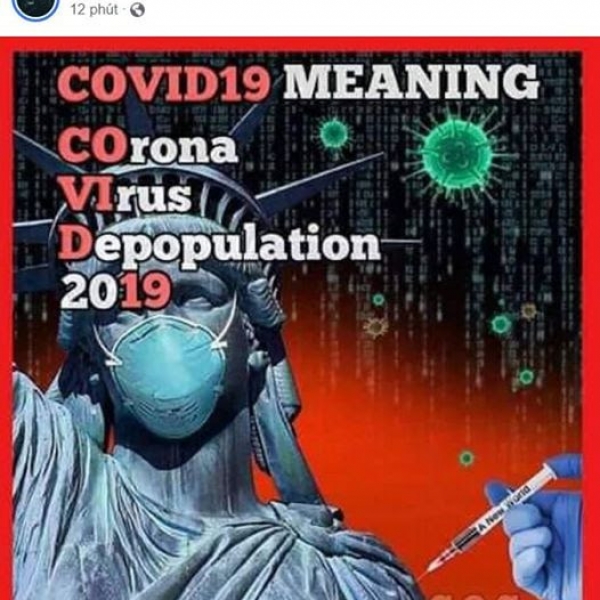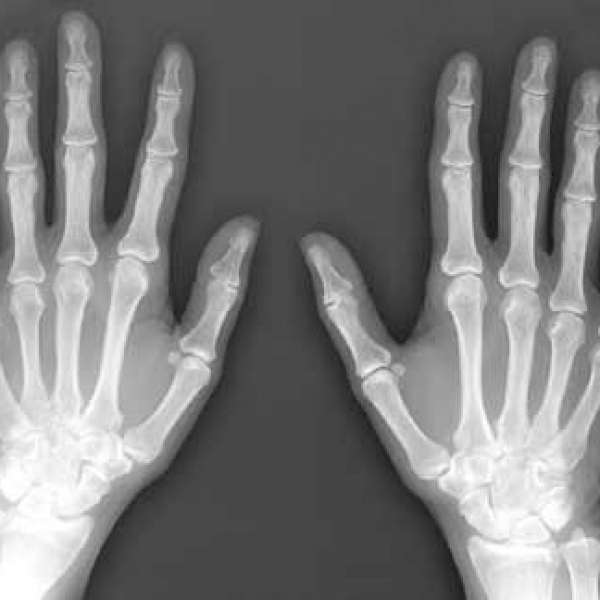Contact Admission
Swine flu
The swine tapeworm, also known as the swine tapeworm, has the scientific name of Taenia solium, is a flat fluke with one end with tentacle mouths to attach to the intestinal wall and the body of the tapeworm that is continuously sticking together into a wire. Cysticercosis is caused by infection of the larvae of the swine fluke.
|
Hình 1: Thịt lợn nhiễm sán |
Taeniasis is caused by infection with adult tapeworms. Pig meat provides an important source of high-quality protein, easy to process and affordable, so it is considered indispensable in every meal of Vietnamese family. . However, the supply of pork is under threat from infectious diseases such as the outbreak of African swine fever in February 2019 and now a swine flu epidemic is in danger of spiking in the provinces. North. According to a report by the Ministry of Health, currently more than 55 provinces have recorded this disease. However, people need to be fully consulted and educated about this disease to avoid panic in the community.
1. Epidemiology:
Swine fluke infections are scattered in many countries around the world, an estimated 50 million people are infected [1]. This estimate may be lower than the actual prevalence because the disease is sometimes not clinically apparent and there is relatively little epidemiological data on prevalence. Cysticercosis is recognized by the World Health Organization (WHO) as a neglected tropical disease. The disease is distributed mainly in developing countries in Central and South America, sub-Saharan Africa, India and Asia. The incidence of swine fluke larvae varies in these countries and is often higher than in rural or suburban areas where pigs are raised and the sanitary conditions are poor. In Vietnam, swine fluke infection is distributed in many places related to the eating habits of undercooked pork. In the lowlands, the prevalence of tapeworm infection in pigs ranges from 0.5-2%, while in the midlands and mountainous areas the rate is 2-6% higher. The epidemic of swine fluke infections has a negative impact on the economy due to additional costs and negative impacts on the pork trade market.
2. Life cycle and development of swine fluke:
|
Hình 2: Chu trình phát triển của sán lợn |
Humans and pigs become infected with tapeworm larvae by ingestion of T. solium eggs from the feces of an infected adult. After eating, embryos (oncospheres) hatch in the small intestine, invade the intestinal wall and pass the bloodstream into the brain, striatum, liver and / or other tissues. Over a period of 3 to 8 weeks, the swine hydatid cyst develops in the tissue; These are sheathed cysts, filled with liquid inside and a tapeworm (called scolex). Diagnosis of swine infected with swine fluke by finding many of these cysts that people often call rice grains are abundant in pork.
People are infected with tapeworms (adult tapeworm infection) by eating uncooked rice pork (pork containing tapeworm larvae) (eg, spring rolls, ...). After eating, these cysts will attach to the small intestine and travel in the human small intestine with the ends of the scolex tip and hook. It then breaks down and elongates by forming successive flukes, called proglottids. The helminths develop over a period of 2 to 4 months. Adult tapeworms can reside in the small intestine for many years; They can grow up to 7 meters (2-4 meters on average) in length, with each flukes containing 50,000 to 100,000 eggs. Eggs are released into the environment by feces or sometimes through the anus. That is why it is possible to diagnose a person infected with swine fluke by finding flukes in the feces or the ones that come out of the human anus.
Thus, T. solium has a two-host life cycle between humans and pigs. Humans are the sole host for adult tapeworms, while both pigs and humans can be intermediate hosts carrying the larval stage T. solium (cysticercus). About 5-10% of people infected with the swine fluke develop an adult infection.
|
Hình 3: Vòng đời của Taenia solium |
Pigs get infected by eating food or water contaminated with the feces of infected people. This transmission is common in rural communities where pigs roam freely and there is human fecal contamination. Swine-to-pig transmission also occurs, although its effect on human infection rates is not fully understood.
A common misconception is that it is believed that cysticercosis is caused by direct infection from eating pork. However, as described above, ingestion of infected pork causes adult tapeworm disease only because the infected pork contains the larvae cysts that develop into adult worms in the human intestine, but do not contain any. eggs cause swine fluke larvae.
It was previously thought that transmission of cysticercosis can occur indirectly, for example by ingestion of produce irrigated with water contaminated with human feces containing T. solium eggs. For example, if people eat vegetables irrigated with human feces infected with swine fluke eggs (due to the decomposing pig fluke eggs), the eggs that enter the human intestine will develop into larvae to enter the human gut. blood then forms helminth larvae cysts in organs, most often in the muscles under the skin, eyes and brain. In addition, there is also a case of burning bovine tapeworms back up to the stomach and then being decomposed by gastric juice, the eggs are released back to the small intestine to hatch into the larvae that go through the intestinal wall into the bloodstream to the bodies forming cysts. larvae. But such cases are very rare. Meanwhile, recent epidemiological evidence shows that the most common source of fluke eggs infection is from asymptomatic carriers [2,3,4,5]. Consequently, cysticercosis should be seen as a person-to-person disease, in which infected pigs are the culprit of the infection, not through environmental sources.
3. Diagnosis of swine fluke:
Diagnosis of people infected with swine fluke is mainly through the detection of flukes that come out of the anus or are excreted, not through blood tests for antibodies because of the normal life cycle of the human swine fluke. there are no swine fluke larvae that pass through the intestine to enter the blood to form a larvae cyst. Only in the cases of people carrying tapeworm larvae cysts are there the formation of swine fluke-specific antibodies (but as analyzed above, these infections are not caused by eating pork and rice but due to ingestion of tapeworm eggs contained in vegetables or water contaminated with swine fluke eggs released from the scorches in the environment or human-to-human transmission).
4. The meaning of blood test to diagnose swine fluke infection:
The ELISA test is not a test used to diagnose people infected with swine fluke because normally people infected with swine fluke only have an adult tapeworm in the intestine, not the larvae entering the blood or helminth cysts in the organs to have chance of exposure to the immune system to generate swine fluke-specific antibodies. The ELISA test for tapeworm is only indicated on humans, but clinically detects that there are cysts under the skin, in muscles, or ultrasound shows there are cysts that are found in the brain, eyes, or organs. In addition, the ELISA test to diagnose swine fluke infection if using non-quality kits that cannot use highly specific antigens for swine fluke, it will give many cases of false positives. Therefore, an ELISA result must always be interpreted with the clinical setting, with the ratio of eosinophils in the blood (must be higher than 9% or at least 7%)
5. Prevention [1]:
Preventing human tapeworm infection is very important in reducing the number of egg carriers and can be done by eliminating pork consumption by people infected with tapeworms. Methods include:
Check the pork infested with tapeworm (rice pig), visible in raw meat.
- Frozen meat or thoroughly cooked to destroy pig tapeworm cysts; Soaking and washing of salt are not warranted enough. Injecting pigs with antiparasitic agents may reduce the parasite but is not reliable enough to ensure the safety of pork.
Preventing the transmission of hydatid cyst infections to pigs can be done by eliminating the pig's access to human feces. Methods include:-
Improve sanitary conditions for proper human waste disposal (using toilet or sewage system)
- Keep pigs so they are not allowed to roam in areas with human waste..
Reduced transmission: Mechanisms that disrupt human-to-human egg transmission include:
Educate the community about the routes of transmission
- Good personal hygiene and hand wash before preparing food
- Targeted treatment of human tapeworm carriers
Large community anthelmintic programs to treat tapeworm carriers
The treatment of choice for the T. solium tapeworm in the community is niclosamide, a single dose of 2g (four chewable tablets) in adults, 1.5g in children over 34 kg, and 1g in children 11 to 34 kg. . Niclosamide is no longer sold in the United States. Praziquantel can be used alternatively at a dose of 10 mg / kg in a single dose.
There are currently no human-studied vaccines.
Reference source:
- Uptodate: “Cysticercosis: Epidemiology, transmission, and prevention”
- Sarti-Gutierrez EJ, Schantz PM, Lara-Aguilera R, Gomez Dandoy H, Flisser A. Taenia solium
taeniasis and cysticercosis in a Mexican village. Trop Med Parasitol 1988; 39: 194–48. [PubMed:
3194663] - O’Neal SE, Moyano LM, Ayvar V, et al. Geographic correlation between tapeworm carriers and
heavily infected cysticercotic pigs. PLoS Negl Trop Dis 2012; 6: e1953. [PubMed: 23285305]
Other news
- Therapeutic potential and mechanisms of mesenchymal stem cell-derived exosomes as bioactive materials in tendon–bone healing ( 08:38 - 23/11/2023 )
- Symbol of medicine ( 19:38 - 19/09/2021 )
- The history of the development of medicine worldwide and in Vietnam ( 18:58 - 19/09/2021 )
- Pharmacology in mind ( 08:42 - 04/02/2021 )
- Nitric Oxide and other medical contributions over 2 decades ( 08:19 - 11/12/2020 )
- Scientists Create First Full-Size 3D Printed Human Heart Model ( 09:32 - 10/12/2020 )
- How Many People Need Vaccines to Reach Herd Immunity? ( 09:25 - 10/12/2020 )
- Whitmore's disease increased in Central ( 07:56 - 19/11/2020 )
- Diabetes - the silent killer ( 08:17 - 16/11/2020 )
- Lung cancer may be mistaken for COVID-19 ( 08:30 - 21/10/2020 )











